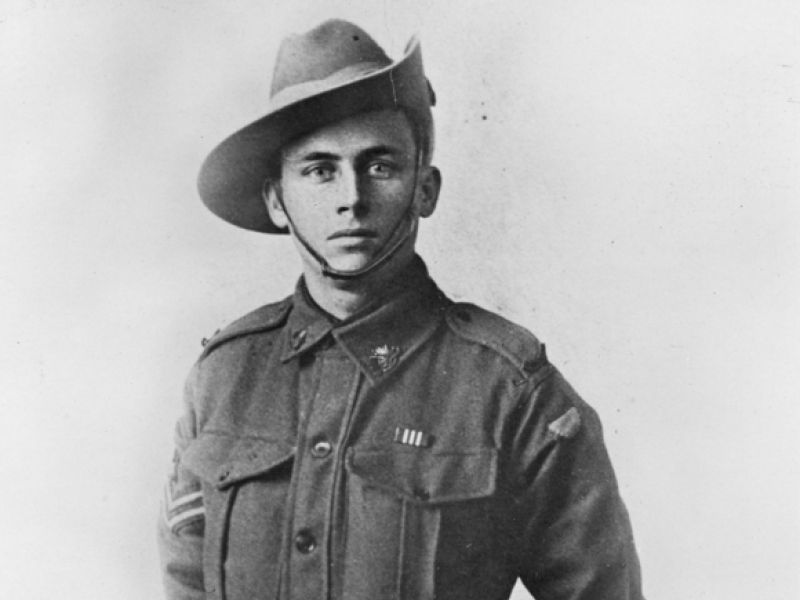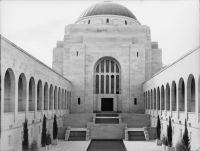Corporal Harry Burgan Slee, 50th Battalion, AIF
Harry Slee was born on 13 July 1897 in Yelta, Victoria. He was the second of three children born to Walter and Mary Ellen Slee, although his younger sister Clarice died in infancy. The family moved to Wallaroo in South Australia in 1901. Harry was educated at the Wallaroo Mines public school, later graduating dux from the high school. From there he went to Adelaide High School, and Adelaide University to train to be a teacher. His family was closely associated with the local Methodist church, and it is likely that Slee shared their faith. It was reported that:
“He possessed a sterling character, being genuine all through.”
Harry Slee enlisted in the Australian Imperial Force shortly before his nineteenth birthday in 1916. His older brother Clive was already serving in the field artillery. Harry underwent a period of training in Australia before leaving for active service with reinforcements to the 50th Battalion in August 1916. He went first to England, where he undertook a non-commissioned officer’s course at Tidworth. Late in 1916 he was promoted to acting corporal, a rank which would be confirmed in April the following year.
The 50th Battalion participated in several important actions in 1917. In April the battalion captured the Hindenburg outpost village of Noreuil, and later in the year it participated in the fighting on Messines Ridge and at Polygon Wood. During all of this, Slee proved an able soldier and the following year was awarded the military medal for “conspicuous services rendered.”
At the end of March 1918, the German Army launched a series of major offensives which pushed the allies back. On 5 April the 50th Battalion helped to repulse the largest German attack against Australian troops at Dernancourt, and was later rushed towards Villers-Bretonneux, which had been captured in the German advance.
On the night of 24 April, the 50th Battalion took part in a counterattack on Villers-Bretonneux, successfully ejecting the German garrison after hours of vicious fighting. More than 250 men were listed as casualties after the operation, including more than 30 missing. One of those missing was Corporal Harry Slee. Although his parents received confirmation that he was wounded and missing, there was no official word of his death. In fact, Harry’s brother Clive heard that he was taken prisoner, so the family held hope for many months that he was still alive.
It was not until 1919 that the Slee family could be certain that their youngest son had been killed in action during the counterattack on Villers-Bretonneux. Investigations revealed a number of witnesses who had seen him wounded in the stomach, lying in a shell-hole. He had been put there after having his wounds tended to by a Private Shaw while he waited for stretcher bearers, but he never made it to a casualty clearing station. It was later noted that there was heavy German shelling in the area at that time, and it was thought that the corporal had been hit a second time and killed.
Harry Slee’s body was never recovered, and today he is commemorated on the Australian Memorial at Villers-Bretonneux. He was 20 years old.
Private William Allanson of the 50th Battalion wrote to the Slees to say:
“It was my privilege and pleasure to have had a good deal to do with Harry. Not only did I admire his manly traits of character, but also his soldierly bearing. He was a soldier and a man respected by all his comrades. He set a fine example to his fellows and by the remarks that I have heard of late I know that his life was appreciated because of its noble qualities.”
- AWM Honour Roll https://www.awm.gov.au/collection/R1662271

 Australian War Memorial
Australian War Memorial